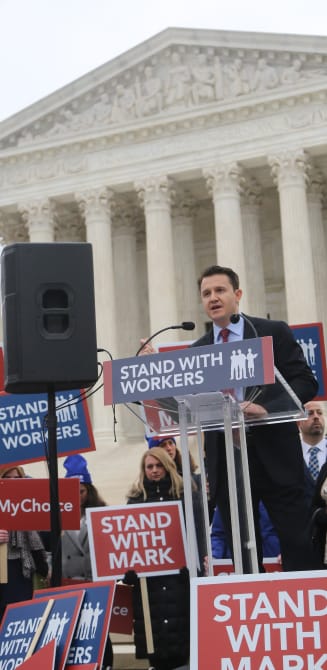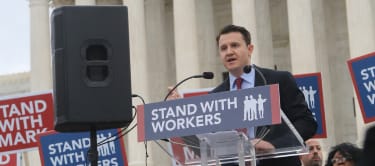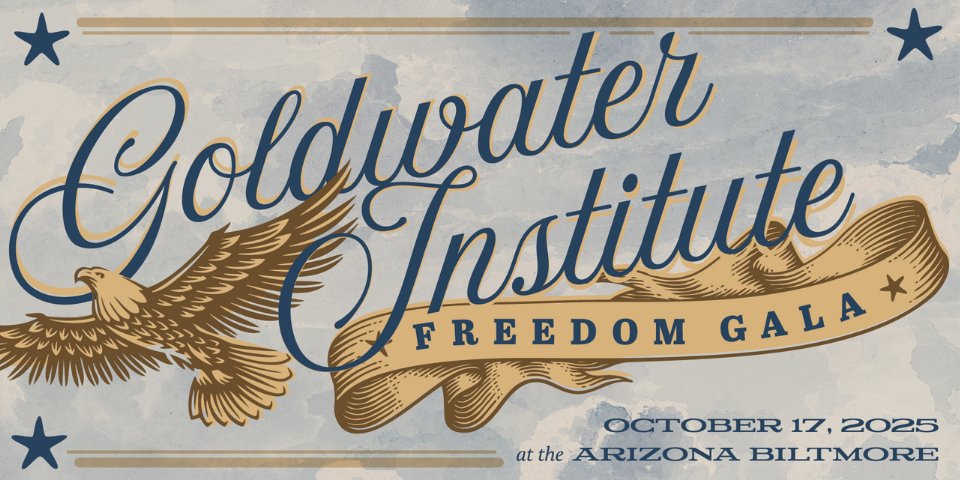Arizona government entered modern financial transparency in 2008 when the legislature approved the launch of the Arizona Open Books website. When the website came online in 2011, the state essentially opened its checkbook by posting individual transactions to the web. This report assesses the usefulness of Arizona’s Open Books website and reveals questionable financial transactions.
The Arizona Open Books website proved useful in exposing some suspicious transactions, but transparency in Arizona still needs improvement. We were able to use the website to find wasteful spending on nearly $2.5 million worth of “Awards” and another $1 million on “Entertainment and Promotional” items in 2013. But the site did not provide sufficient detail to assess the legitimacy of suspicious transactions lumped into catch-all codes like “Other Professional Outside Services,” which totaled $289 million in 2013 alone.
The bottom line is that while most of the state’s individual expenditures are posted for public scrutiny, it is still possible for waste, fraud, and abuse to hide in plain sight due to vague or cryptic descriptions of individual expenditures. Curious taxpayers are treated to accounting codes and code descriptions that often bear little resemblance to the purpose for which funds are expended. In addition, payroll abuses can be hidden because payroll is kept secret under current law even though public employee salaries are subject to open records.
If Arizona’s state government is to be truly transparent, each transaction posted on Arizona Open Books needs an accompanying memo line to give citizens accurate descriptions of the specific purpose of each transaction. Sourcing of expenditures should be provided as well. Finally, specific details about the public payroll should be a centerpiece of Arizona Open Books.
Introduction
In 2008, the Arizona legislature passed Senate Bill 1235, which required the State of Arizona to open its accounting books to the public at large, down to the individual transaction. The result, implemented by the Department of Administration, is Arizona Open Books (openbooks.az.gov), a website launched in January of 2011. The law requires transaction information to be presented in a way that is “intuitive to members of the general public.” While this website is a good first step toward making state government more transparent and efficient, the site falls short of being easy for citizens to understand. Consequently, the state’s finances are not as transparent as they can and ought to be.
The real test of a transaction-level financial transparency system is whether individuals from the general public can tell how their hard-earned tax money is actually spent. For example, if a state agency spent money for an employee to travel to a conference, a taxpayer should be able to identify which conference. This information would enable the taxpayer to determine the utility of the conference, whether the expenditure was extravagant, and save time by avoiding unnecessary fishing expeditions when something appears suspicious only because there is too little detail available. As it is, taxpayers appear to be expected to know government accounting codes that provide little descriptive information and whose meanings appear to bear little resemblance to the purpose of actual expenditures.
This does not mean Arizona Open Books has been ineffective. For example, for two years prior to the website’s launch, $1.5 billion of state spending was categorized as “Other Miscellaneous Operating.” This vague category represented a lack of information that put taxpayers—and possibly even state managers—in the dark on a significant state line item. In the same year the site was launched, the mere appearance of impropriety from so vaguely categorizing so much spending brought about a huge reduction in this category of expenses. As of 2013, the “Other Miscellaneous Operating” category was down to $55 million, an obvious improvement.
Despite these improvements, the transparency website does not lend itself to investigation by an outside party without a good deal of agency-level knowledge. First, the number of transactions carried out by the state is vast, and a single transaction can vary from a few pennies to millions of dollars. The small transactions, though too many to individually investigate, can add up. What this means is that sheer volume makes it possible for waste, fraud, and abuse to hide in plain sight. Second, and perhaps more fundamental, there is simply not enough information on the website itself for an outsider looking in to make informed judgments about the reasonableness of most transactions.
Despite the drawbacks, it is possible to gather some important information from the state’s transparency website. Data were downloaded from the site into an Excel spreadsheet. Due to the volume of transactions, those smaller than a few thousand dollars were ignored. The transactions were then examined for anomalies. The results are reported below as the good, the bad, and the ugly in investigating expenditures from the state’s transparency database. Since the website lacks certain information, phone calls were made to agencies for clarification. When clarification was forthcoming, suspicious expenditures were often cleared up. If agencies refused to cooperate, expenditures were simply reported for what they appeared to be on the system.
The Good
Supreme Court
At the outset of this project, the Arizona Supreme Court seemed to have the greatest number of questionable expenditures. Looking through their expenses, large sums of taxpayer dollars were found to be spent on furniture, conferences, advertising, meals, and motor pool charges. As with other departments, our experience with the Supreme Court’s posted transactions provides evidence that Arizona’s open book website is not highly transparent or intuitive. Fortunately, Supreme Court administrators diligently provided information to make up for the lack of transparency.
Arizona Open Books indicates that the Supreme Court spent $320,807.75 on capital furniture expenses. Surprisingly and suspiciously, the largest expense, totaling $232,605.87, has the payee listed as “N/A.” Upon questioning the department’s chief financial officer it was discovered that the capital furniture expense was not furniture at all. It was actually purchases from Hewlett Packard, primarily for upgraded servers. It turns out the mix-up results from the Supreme Court’s code for Capital Assets being the same as the Department of Administration’s code for furniture. The lack of coding alignment between departments raises questions about how many other transactions are improperly coded throughout the state’s accounting system. A simple comment section would have cleared up any questions regarding this expense.
Shifting focus to charges under “other operating” expenditures there are a couple of expenses, totaling over $5,000 with Cleats, Inc. listed as the payee. On first glance this expenditure looks like the Supreme Court is using taxpayer dollars at a popular sporting goods store in the valley. Even the chief financial officer initially thought the expenditure looked odd. He promised to look into it right away and it turns out Cleats, Inc. is the parent company for a subsidiary called It’s Your Choice. It’s Your Choice is a promotional company and the money was used to purchase black portfolio binders with the Court Appointed Special Advocate logo affixed to be given to court appointed special advocate (CASA) volunteers. Perhaps this money could have been better spent for the purpose at hand, but even the most hard-hearted efficiency advocate will likely find it difficult to criticize giving binders to volunteers. The real problem this highlights is the difficulty involved in getting to the bottom of the reported expenditure.
On a single day the Supreme Court spent over $200,000 on “charges for conference registrations/attendance fees” at Marriott International, Inc. Arizona Open Books only provides the name of the payment recipient and the fund out of which the money was spent. There is no description of the conference’s purpose or other pertinent information such as number of attendees. As it turns out, the $200,000 expenditure was for a conference that had 569 registrants, with 23 separate educational sessions over three days. Additionally, the conference was paid for by registration fees and it was conducted to continue judicial education for judges required by the Arizona Code of Judicial Administration. None of this pertinent information came from the Arizona Open Books website.
Another Supreme Court expenditure that appeared suspicious was a $25,000 payment made to PRfect Media, Inc. The expenditure was classified under “advertising” expenses, begging the question of why the Supreme Court would need to advertise. It turned out the funds were used for the 2012 General Election Judicial Performance Review (JPR). This informational bulletin is intended to provide voters with information on judges, including how to locate JPR ratings for judges subject to a retention election.
Yet another area where a lack of transparency caused suspicion was “in-state travel” charges from the court. These categories include meals with and without an overnight stay, lodging, and motor pool charges. Without knowing most of these expenses were incurred by probation officer training, a million dollar motor pool bill would seem excessive and nearly $100,000 spent on meals should likewise raise questions. Even considering their purpose the charges seem high. However, a couple of sentences in a memo field in the Arizona Open Books database would have at least cleared up the suspicion that the Supreme Court was gallivanting about the state on the taxpayer’s dime. A more transparent website with explanations for the individual expenses could help accomplish greater efficiency and potentially reduce these expenses by inviting more critical scrutiny by taxpayers.
The Arizona Supreme Court was the most helpful of all agencies in explaining their transactions. They were able to explain each transaction of interest in a timely and efficient manner. Their short description for each transaction of interest proves that supplementary information could and should be made readily available.
The Bad
Since it is derived from the state’s accounting system, Arizona Open Books is littered with categories so generically described that they are essentially meaningless to a person curious about government spending. Two of the categories found most often are “Miscellaneous Rent” and “Other Professional Outside Services.” The State of Arizona spent nearly $300 million in the “Other Professional and Outside Services” category in fiscal year 2013. The only information provided was the impressively vague definition for the category and the name of the payee. For charges expensed under “Miscellaneous Rent” it was decided to solely focus on the Arizona Department of Education because of the wide variety of expenses they drop into this generic category.
It should be noted that the use of private vendors is a good practice. With outside contracting, competitive bidding can keep costs lower than in-house services, and standard services are more open to innovation. However, no matter how government conducts its business, transparency is absolutely essential. In the private sector, if poor business practices occur, business owners bear the cost, and competitors can arise to give consumers better value. This is not possible where government is involved and taxpayers are on the hook. So if government enters into inappropriate contracts for some reason, the only way to discipline the system is through audit checks and transparency. Improving clarity and transparency in the system would enable more citizens to evaluate government transactions, providing a higher level of accountability.
Charges for Miscellaneous Rent
Unlike their counterparts at the Supreme Court, the Arizona Department of Education’s response to questions about specific expenses consisted of generalities that failed to make questionable expenditures any more transparent. The Arizona Department of Education (ADE) spent $1.8 million on “Charges for Miscellaneous Rent.” This category consists of charges for conference expenses, training sessions, and payments to a catering company, a storage company, a life insurance company, and a computer rental company.
A majority of the expenses in “Charges for Miscellaneous Rent” were for properties rented for conferences. This totaled a whopping $1,408,706.33. In contrast to the Supreme Court, when asked about these expenses the ADE did not mention the reason for the conferences or disclose the number of attendees. The response was that “most of these expenses are paid for with conference registration fees collected from attendees.” In other words, there is no telling how much of the expenses from venues such as Casino Arizona were paid for by taxpayers. Given that the ADE generally puts on conferences for school district personnel, it is likely that the conference expenses were entirely paid for by taxpayers except to the extent that vendors paid fees to be allowed to market their wares to the conference attendees. It would help if Arizona Open Books informed taxpayers about which costs were covered by attendance fees, reasons for conferences, and the total number of attendees and their affiliations.
Another puzzling expense was $2,009.87 paid to MassMutual Life Insurance. MassMutual Financial Group offers whole life insurance, annuities, retirement plans, disability income insurance and long-term care insurance for individuals and businesses. The ADE said the expense was coded incorrectly and was actually for non-employee travel to attend a conference. It could be reasonable in this case to assume that taxpayers funded a private company to make a sales pitch at a publicly sponsored conference, an expenditure that likely violates the state constitution’s gift clause. Were a more thorough explanation required on the website, this expenditure might never have been authorized in the first place. Without more detailed explanations on Arizona Open Books, this questionable expenditure and perhaps many like it can easily hide in plain sight.
Another questionable expense categorized as “Charges from Miscellaneous Rent” was paid to Sodexo America, LLC. Sodexo provides quality-of-life services, including sustainable energy programs, efficiently designed workspaces, and wellness and nutrition programs. The charges paid to Sodexo amount to just over $174,000. Perhaps the Arizona Department of Education used Sodexo in their food service capacity to provide catering for training and conferences, but there is no way to be sure just by visiting the website. The Department of Education never responded to an email requesting clarification.
Other Professional and Outside Services
The State of Arizona spent $288,537,361.83 in the “Other Professional and Outside Services” (emphasis added) category in fiscal year 2013. The description for this category reads “Charges for other professional and outside services such as laundry and dry cleaning, religious services, interpreters, lecture fees, security, and other services provided by external entities not accounted for elsewhere.” On its face, this is a rather outsized sum to be assigned into what appears to be a catch-all category. When comparing the dollar amount in this category to the dollar amount of the other categories within the broader “Professional and Outside Services” category it is by far the largest. The other categories within “Professional and Outside Services” include “Education and Training,” “Engineering and Design,” “Financial Services,” “Hospital and Medical Services,” “Institutional Care,” “Legal Services,” and “Temporary Agency Services.” The only category whose total comes close to “Other Professional and Outside Services” is “Hospital and Medical Services,” which falls short by over $100 million. Clearly, “Other” is less transparent than one of the more specific descriptions. Yet, perhaps there are so many different other services that it is impractical to create categories for all or any of them. This is why a memo line on the website would aid transparency.
A review of various departments’ expenditures under “Other Professional and Outside Services” showed that few transactions offered any level of detail, creating great potential for corruption and misuse of funds. Departments were contacted for clarifying information. Some departments were helpful while others denied requests and insisted on submission of Freedom of Information Act (FOIA) requests. While FOIA is useful, it is not in itself true transparency. Few understand the law and even the civic-minded will hesitate to bother with the trouble and expense. There is no reliance on FOIA requests for the findings listed below because real transparency demands that all relevant information appear online.
The Arizona Department of Transportation (ADOT) has the third largest agency budget in the state, behind only the Departments of Education and Economic Security. Given the high cost and capital-intensive nature of ADOT’s work, this intuitively makes sense. But the amount of money ADOT categorizes under “Other Professional and Outside Services” does not make sense. Over $44 million is paid to individuals and companies, with no explanation or even a hint as to what services are being provided. This is especially troubling since the “Professional Outside Services” category provides separate, relatively descriptive categories for design and engineering costs. Nevertheless, design and engineering companies are also paid under the “Other” category. For example, the Jacobs Engineering Group, which provides “technical, professional, and construction services” was paid $1,335,206 under the “Other” category in addition to $3.3 million under “Engineering and Design.”
Other examples of ADOT’s suspicious “Other Professional and Outside Services” expenses include more than $46,000 to Corporate Destination Services of Arizona for “meeting and event planning services.” Another $73,000 went to True Color International for “a model for understanding yourself and others based on your personality temperament.” ADOT offered no explanation and demanded a FOIA request, a task that often unfairly challenges the taxpayer to craft a carefully and specifically worded request in order to get the information they seek.
Like ADOT, the Arizona Department of Education (ADE) stonewalled and obfuscated. Questionable expenditures include $53,332 to the Arizona Automobile Dealers Association and $205,003 to the Arizona Interfaith Movement. After further inquiry, the department told us that the payments made to the Arizona Automobile Dealers Association were “to promote an automotive strategy for Arizona’s youth” and the payments made to the Arizona Interfaith Movement were for “payment for interfaith movement golden plate rule per 15-243- golden rule special plate fund.” A combined $2 million was paid to Arizona State University and the University of Arizona for unexplained education and training purposes. A number of individuals are listed as payees under the “Other” category. One of the largest recipients is Teresa Ann Lauffer, who received $66,165 for her services, which are not explained on the website.
Financial information from the Department of Environmental Quality suffers from similar problems. Of the department’s $100 million budget almost $38 million is classified as “Other Professional and Outside Services,” meaning that nearly 40 percent of the department’s spending lacks any real explanation.
Included in the “Other” category is a total of $22 million paid to Gordon-Darby Arizona Testing. Expenses of this magnitude require an explanation, but none is given here. There is no way of knowing without further investigation what services Gordon-Darby Arizona Testing provided. After researching the company, it was determined that the company provides services relating to vehicle emissions testing and related IT services. Yet, something that accounts for roughly 20 percent of the department’s budget should be placed in a more descriptive category or at least have some further accompanying explanation besides “Other.”
Another example of an obvious mistake that could have been easily detected and fixed with a memo field in the database comes from the Department of Public Safety. Arizona Open Books shows that the Department of Public Safety spent $571,675.11 at the Goodyear Tire and Rubber Company for “Charges for the costs associated with the purchase of supplies used in connection with the repair and maintenance of equipment and other assets that are neither buildings nor transportation equipment” (emphasis added). An expense of half of a million dollars in a category that clearly should not include anything to do with a tire company should have thrown up immediate red flags within the department. Yet, it slipped through. By the time the Department of Public Safety was contacted, its accountants were aware of the mistake. Why it was not already fixed is another issue entirely. Regardless, this points to the underlying structural problems with the website. Because the website does not allow for a descriptive memo notation, coding errors like this are bound to slip through.
The Ugly
Expenditures classified as “Miscellaneous Rent” and “Other Professional Outside Services” are often mysterious and might represent misspending, but there are plenty of examples of obvious waste. The State of Arizona spends a surprising amount on promotional items and awards, including promotional infant onesies, reusable grocery bags, and sport cups, just to name a few.
Promotional Items
In fiscal year 2013, the State of Arizona spent $939,976.25 on “Entertainment and Promotional” items. These items include reusable grocery bags from the Childhood Development Health Board, sport cups for attendees of an Arizona Department of Education conference, and $31,000 for pens and other items given away by the Department of Public Safety during anti-gang awareness events. It is hard to say with any credibility that these expenditures benefited the Arizona taxpayer in a meaningful way.
The Arizona Department of Education spent almost $22,000 on awards they described as “promotional items for educational conferences.” Those items include “lanyards, name tags, flash drives, sport cups, pens, tote bags, and so on.”
Of the nearly $1 million spent on promotional items, one company, Brown and Bigelow, Inc., took home $682,179.20. The Early Childhood and Development Health Board, by itself, spent $350,676.09 at Brown and Bigelow. After further digging, it was found that the Early Childhood and Development Health Board bought $237,737 in backpacks. The backpacks were used as packaging when passing out Parent Kits, which included six parenting DVD’s, a guide to community resources, a book to encourage reading, and a magnet with the phone number to the “Birth to 5” helpline. Nearly all of the remaining money spent at Brown and Bigelow, Inc. by the Early Childhood and Development Health Board, approximately $126,000, was for “parent awareness and community outreach efforts.”
The Early Childhood and Development Health Board exists as a result of an initiative popularly known as First Things First, which passed in 2006. The board operates without legislative supervision because it has a dedicated funding source, a tax on tobacco. That is, it essentially has no oversight except to the extent that the governor’s office chooses to exercise it through the appointments made to the board. Transparency is therefore all the more necessary. Few voters would have suspected their vote was for taxpayers’ money to be spent on promotional infant onesies or reusable grocery bags.
Awards
In fiscal year 2013 the State of Arizona shelled out $2,433,236.22 for awards. The Arizona Open Books website states that these awards are for “Employee Recognition, etc.” Given this information, no person looking at the website could possibly know that the lion’s share of these awards were for livestock contests. With a total of 49,423 full-time equivalent state employees, Arizona Open Books makes it appear that state agencies spent $50 per state employee on awards in 2013 alone. Deeper digging reveals that the transparency website’s information is once again inadequate. Buried in this section are awards totaling $1,755,611.06 handed out by the County Fairs Livestock Agriculture Promotion Fund and another $250,000 to Thoroughbred Farms and Ranches, courtesy of the Department of Racing. A mere 18 percent of what is expensed under “Employee Recognition, etc.” actually goes to “Employee Recognition.”
A further breakdown of the awards section by payee showed what appears to be a picture of misuse of taxpayer funds. The Arizona National Livestock Show, which received $533,850, is a nonprofit organization that produces the “largest livestock show in the southwest.” The Governor’s Office, through which these funds are passed, demanded a FOIA request before answering questions about why this handout was included in the awards section and exactly how these “awards” are funded.
Despite the lack of cooperation and transparency from the Governor’s Office, the source of these funds was pieced together. Following the intergovernmental transfers, it appears these funds initially came out of the portion of the general fund that is assigned for the Department of Racing. The Department of Racing then transferred $1,799,500 to the County Fairs Livestock and Agricultural Fund, which resides within the Governor’s Office. The Governor’s Office then handed out $533,850 from the County Fairs Livestock and Agricultural Fund to the Arizona National Livestock Show. Given that this money appears to have come directly from taxpayers, an explanation of the purpose of the “awards” would seem appropriate. To be sure, there are some designated fees and other non-tax funds that are deposited into the general fund (which speaks to the confusing nature of Arizona’s accounting). If this is the nature of these funds, it is not possible, or at least not easy, to figure this out from the Arizona Open Books website.
Travel in the Office of Tourism
In total, the Office of Tourism spent $103,625.51 for out-of-state travel expenses. Breaking this down further, about half of this expense was for out-of-state travel and the other half was for out-of-country travel. It’s easy to see why the Office of Tourism might spend money on out-of-state advertising and out-of-state consultants, it isn’t immediately obvious why Office of Tourism personnel should travel out of state, let alone out of the country. Of this amount, $22,897.81 was spent on out-of-country airfare; another $20,839.03 was spent on out-of-country lodging, and $5,757.73 was spent on out-of-country meals. The information on Arizona Open Books does not include who the travelers were, their destinations, or the purpose for travel.
Recommendations
Clearly, much is left to be accomplished in making state finances truly transparent. The most obvious shortcoming, however, is a lack of explanation for individual expenses. In addition, a large class of state spending—public employee salaries—is inadequately reported even under today’s system.
Recommendation 1: Provide a memo line in the state’s spending database so that accountants can input more detailed explanations of expenditures
The state’s checkbook, really a series of checkbooks from various departments, is a behemoth. In fiscal year 2013 there were over 4 million expense-related transactions. This report consists of several weeks of research into state budget expenses line-by-line as laid out in the Arizona Open Books website, but the sheer number of transactions makes a truly comprehensive report on state spending nearly impossible, in no small part because the lack of detail in the database requires so much additional research. There is little doubt there are many examples of waste and abuse buried in plain sight in the sheer volume of transactions reported on the Arizona Open Books website.
The only way to get a true measure of what taxpayer dollars are going towards would be to require a free form memo section on line items, entered with little extra time when the transactions are logged into an agency’s electronic books. This would provide much needed information in order to determine if the expenses are legitimate or not. This would enable the website to actually be “intuitive to members of the general public”. This simple step of providing useful information, as demonstrated by the Supreme Court example, would result in more transparent spending.
State agencies should be required to describe transactions in a way that is meaningful to the average citizen. These descriptions should be inputted under oath.
Recommendation 2: Post salary information.
State workers’ salaries understandably consume a large portion of state spending. State worker salaries are subject to Freedom of Information Act requests. In fact, state employee salaries are regularly posted on the Arizona Republic’s website, azcentral.com. Unfortunately, when the state’s transparency law was passed, lawmakers explicitly exempted salary data from the requirements. It is understandable to exempt personal addresses from being posted but names and positions, as well as expected hours per week to be worked, should be included in the database. The difference between the spending database and the salaries posted by the newspaper is that actual pay would be posted on the database, which can be different from the base salaries the newspaper posts.
Recommendation 3: Remove the comprehensive financial transparency loophole.
Currently law states that if the state or any local government is awarded a Certificate of Achievement for Excellence in Financial Reporting by the Governmental Finance Officers Association, the posting of that certificate can satisfy the requirement to post individual transactions. Clearly, this provision is a result of an effort to reduce opposition to the original transparency law.
This loophole to transparency is ludicrous. First, the law exempts government from transparency due to an award by an extra-governmental organization. Second, that organization bases its award purely on a government’s Comprehensive Annual Financial Report (CAFR), which is a summary of finances and does not reflect individual transactions in any way. Indeed, it is entirely possible that a CAFR could be largely fraudulent but its mere form would earn a government the certificate. Such a certificate is, in no way, a substitute for full and complete transaction-level transparency.
Full transparency has proven itself to be low-cost in its implementation and easy to maintain. Not only does the state maintain such a system, but the City of Phoenix has gotten onboard as well, despite the fact that both have earned the Certificate of Achievement for Excellence in Financial Reporting. Even small towns are reporting individual transactions through the state’s website. There is no excuse for Mesa and Tucson, among others to hide behind their certificates.
Conclusion
Government’s most defining characteristic compared to private enterprise is its legitimate ability to compel even otherwise free people to contribute to its funding. Combine that with a lack of discipline through competition, and the temptation to, fall down in diligence to spend wisely is profound. Comprehensive transparency is the best way, perhaps the only way, to counteract otherwise nearly unchecked avenues to waste and abuse taxpayer money.
The purpose of transparency is to create a more direct avenue of accountability to taxpayers. This will make government more efficient and effective. While Arizona Open Books marks a significant step forward, there is still much work to do to achieve true transparency. By making sure adequate information is available to evaluate spending, taxpayers can better determine if their money is well spent. Since salary information is technically public knowledge, there is no reason to leave taxpayers in the dark about it. Taxpayers are, after all, paying the salaries. Finally, no government should be able to avoid transparency merely because they pass a desk audit and keep their books in an orderly manner.










